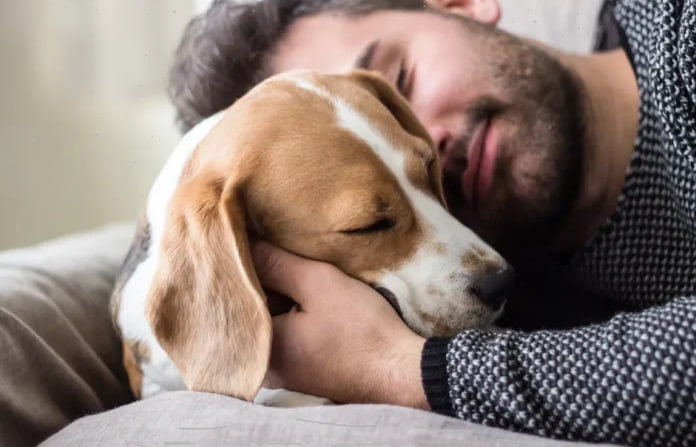Do Dogs “Cry” When Reunited With Their Owners? New Research Says Yes
We all know the heartwarming feeling of walking through the door and being met with a tail-wagging, excited dog. But science now says there may be more to that emotional greeting than meets the eye. A recent study published in Current Biology suggests that dogs may actually produce tears when reunited with their favorite humans—tears triggered by joy and affection.
This emotional response appears to go beyond a simple show of happiness. The researchers believe it’s part of a deeper evolutionary adaptation meant to reinforce the powerful bond between humans and dogs.
Dogs and Humans: A One-of-a-Kind Connection
Dogs have been living alongside humans for thousands of years, evolving in a way that allows them to understand our gestures, body language, and emotions. One of the most significant tools in this communication is eye contact. When a dog gazes into a human’s eyes, it can trigger the release of oxytocin—also known as the “love hormone”—in both species. This hormone plays a major role in forming emotional connections.
The researchers behind this study wanted to see if dogs’ tear production could be tied to such positive emotional experiences. Their findings suggest that dogs don’t just act happy—they may physically respond with emotional tears.
What the Study Found
In the study, scientists measured tear volume in dogs before and after they were reunited with their owners following a few hours apart. The results showed a noticeable increase in tears after the reunion—but only when the dogs saw their primary caregiver. When reunited with familiar people who weren’t their main humans, there was no significant change.
Unlike human tears, dogs’ tears don’t usually stream down their faces. Instead, they create a moist-eyed, “puppy-dog eyes” effect that appears to play a role in social bonding. To better understand what causes this, the researchers tested oxytocin directly. When it was applied to the dogs’ eyes, tear production increased. Other substances didn’t have this effect, indicating the tears were directly linked to oxytocin and emotional bonding.
Why These Findings Matter
This research not only gives us a deeper appreciation for our dogs’ emotional lives but also suggests that dogs may have evolved to express emotions in ways that appeal to human caregivers. When dogs appear teary-eyed, it may prompt a nurturing response—much like how humans instinctively comfort crying babies.
In a separate part of the study, people were shown photos of dogs with and without visible tears. Unsurprisingly, the dogs with moist eyes were more likely to evoke feelings of care and protection.
This emotional signaling could help strengthen the human-dog relationship, which has been built over generations through shared living, working, and playing.
Strengthening the Bond With Your Dog
Understanding how dogs connect emotionally can help you build a deeper, more rewarding relationship with your furry companion. Here are a few ways to nurture that bond:
-
Make eye contact during calm, loving moments. This can help trigger oxytocin and reinforce feelings of trust and affection.
-
Spend quality time with your dog. Whether it’s going for walks, playing, or just relaxing together, your presence matters.
-
Use positive reinforcement. Reward good behavior with praise, treats, or affection to strengthen emotional connections.
-
Pay attention to your dog’s body language. Learning to read their emotional cues helps you respond with care.
-
Stick to routines. Dogs thrive on predictability, and a consistent daily schedule helps them feel safe and secure.
A Relationship Worth Cherishing
The discovery that dogs may cry happy tears upon being reunited with their humans offers a touching glimpse into the emotional depth of our pets. It reinforces what many dog owners have always believed: that their furry companions feel real love and attachment.
As we continue to explore the emotional world of dogs, one thing becomes clearer—our pets are more than just animals. They are emotionally aware companions who share in our joys, offer comfort in our lows, and express their love in ways we’re only beginning to fully understand.
So the next time your dog greets you with watery eyes and a wagging tail, know that it may be their way of showing just how much they missed you.





